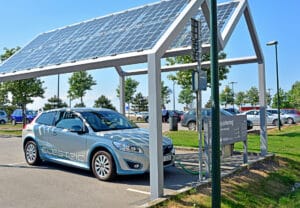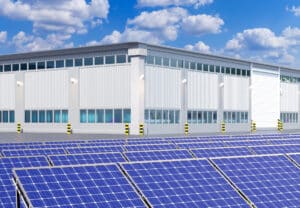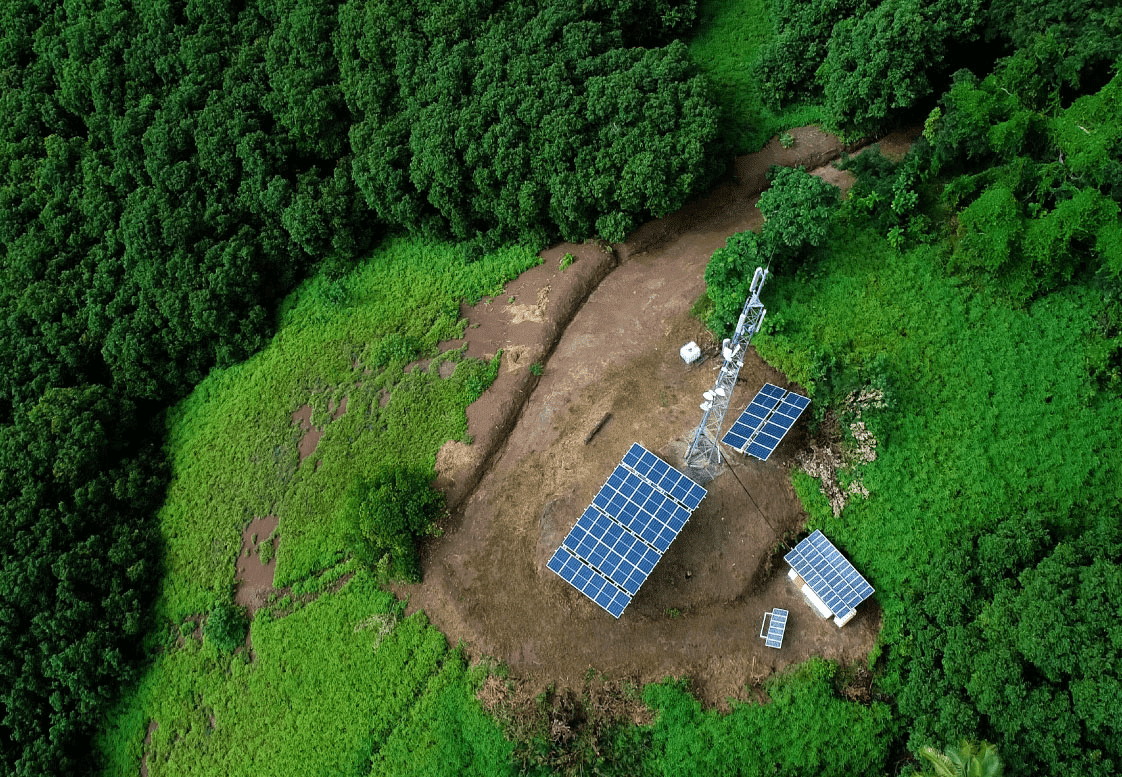
Every day, billions of people use their phones and devices to connect to each other around the globe. This is made possible by cellular networks operating through hundreds of thousands of cellular sites, also known as base stations relaying signals through cities and countryside alike, forming the foundation of modern society.
Many people recognize the metal frames they pass every day as the basic infrastructure that lets them go about their lives, but few know exactly how these towers work and what it is exactly that lets them operate from day to day. So let’s take a closer look at telecom sites and break down exactly what they do.
Types of Telecom Towers
The structure of the tower itself varies depending on environmental factors like the soil composition and weather patterns. Let’s start by taking a look at the different types of towers that you’ll find at every cell site.
Lattice /Self-supporting
A lattice or self-supporting tower uses a square or triangular base and a triangular grid configuration of steel beams to offer improved flexibility and stability. Due to their superior structural strength, they can be built higher and therefore have one of the longest ranges. The downside of using this type is the relatively high cost of materials and construction.
Guyed
A guyed telecom tower often uses a similar structure to a lattice tower but uses cables to tie into the ground for extra stability. Guyed towers can offer extra support in especially windy or unstable environments and can also be scaled up to a couple thousand feet to support heavily used TV and radio networks. While the tower itself uses as much or less material than a self-supporting tower, a guyed tower requires additional space on the ground that can limit its usability in urban environments.
Monopole
A monopole is a relatively simple tower comprised of a single tapered tube with a nest of network equipment at the top. While it has a more limited maximum height than the others, it is relatively simple to install.
Camouflage
Camouflaged towers usually start with a monopole base for several reasons, the first being that after a certain height it becomes a little silly to attempt any kind of disguise. Moreover, the greatest need for camouflaged towers is in urban or suburban settings where taller towers are not feasible anyway. In these settings a tower can be disguised as almost anything you’d expect to see, a tree being a common option but also flag poles, billboards, water towers and more.
What are the main components of a telecom tower?
The technology that makes up most telecom tower sites can be boiled down to three main categories: communications equipment, energy management, and sensors.
Communications Equipment
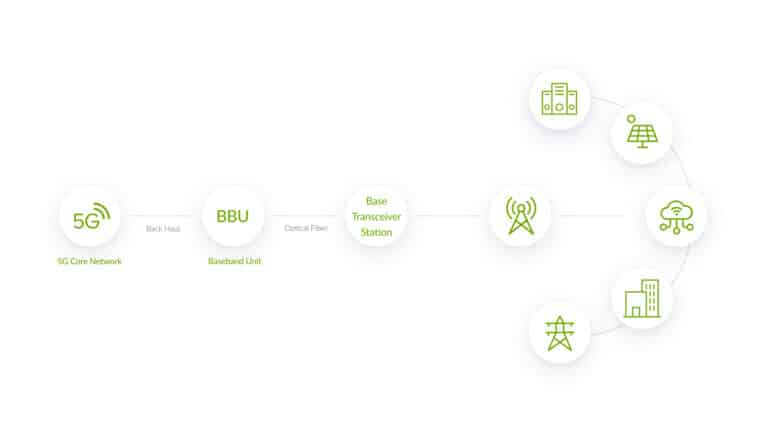
The primary function of a tower is to transmit the data that makes up our communications networks. In order to accomplish this, the site uses several different pieces of equipment:
- Antennae – The hardware unit at the top of and all over a tower. Ultimately receives, sends, and modifies multiple signals. They can be directional or omnidirectional depending on the placement of the other towers in the network.
- Transceiver (transmitter and receiver) – Responsible for transmitting and receiving radio signals via the antenna, as well as converting those signals between analog and digital.
- Baseband receiver unit – Directly converts the signals to a digital format, encoding and decoding to produce data that is compatible with non-radio systems.
- Radio frequency power amplifier – Boosts signal strength for outgoing signals. Notably, consumes the majority of a site’s power.
- Combiner – Combines signals from multiple transceivers so they can be sent from a single antenna
- Multiplexer – Acts as an intermediary between the transmitter and receiver so that the signals are kept separate.
- Control function – Centralized collection of computing devices used to run code and software for automated and on-site management.
Energy Assets
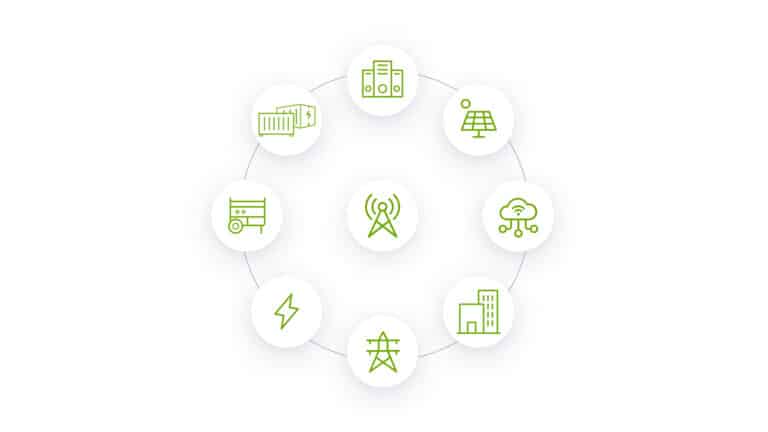
The main power source for the majority of telecom sites is a standard grid connection. This power supply relies on various meters and power modifiers to manage a stable supply of energy. Notably, the rectifier responsible for converting the grid’s AC power to the DC used in site systems is an important tool in managing a site’s energy efficiency.
Grid
The main power source for the majority of telecom sites is a standard grid connection. This power supply relies on various meters and power modifiers to manage a stable supply of energy. Notably, the rectifier responsible for converting the grid’s AC power to the DC used in site systems is an important tool in managing a site’s energy efficiency.
Batteries
Supporting the grid supply in the event of instability or outright failure are lithium-ion or lead-acid batteries. The latter are usually cheaper but have little to no auxiliary functionality. Lithium-ion batteries are more expensive but much more compact and therefore scalable for sites with higher energy demands.
Generator
Locations with particularly unreliable grids or limited energy accessibility can use generators as a replacement or supplemental energy source. Unfortunately, fueling a generator is an expensive and time-intensive task. In addition, the natural inefficiencies of a generator are compounded by poor operation protocols leading to unnecessary consumption and overuse.
Renewables
Generally used in tandem with the other energy assets, several forms of renewable energy can be integrated into telecom sites. Solar panels are a popular option for supplementing or replacing generators, but sites can also use localized wind turbines or hydrogen cells depending on their needs.
Sensors
There is a lot going on with all this equipment, and it’s important to stay on top of and monitor key systems. To do that, sites integrate a variety of sensors.
For power consumption, batteries and grid power can be measured and monitored to assess rates of consumption and spikes in usage. Additionally, generator backups can use sensors to track fuel levels, generator status, and overall load balance.
Another set of machines that keep a site running are the environmental controls. This includes standard HVAC units for temperature controls and AC, as well as smoke alarms. All of these systems need their own sensors to be remotely monitored and controlled.
Finally, there are various security systems that are critical for maintaining site integrity. Some devices are as simple as door alarms and controls, along with cameras and battery location trackers. Even more important than these systems are the aviation warning light and radio beacon, which alert aircraft to the presence of towers. Confirming the status of these pieces of equipment is absolutely essential to maintaining safety standards and regulatory compliance.
Types of Telecom Sites
There are several types of telecom sites that can be set up using the different tower designs. The type used depends on the location of the site and the demands of the network it is integrated into.
Remote sites
Due to their prominence in the landscape, large tower installations often take the form of remote sites. These sites can run autonomously, but in large numbers their maintenance becomes a costly challenge.
Mobile sites
A mobile telecom site usually takes the form of a mobile tower rig like the popular cell-on-wheels. This equipment can be installed remotely to bridge gaps in new network infrastructure or as a temporary fix for disabled towers. A mobile tower can also become a permanent installation in networks with a smaller load or as a relay for larger networks.
Urban Sites
In addition to squeezing normal towers into densely populated areas, there are three alternative types of sites that can be developed.
- Small-scale sites – Tower infrastructure can be reduced to a transceiver and then mounted on streetlamps, billboards, or other tall structures
- Rooftop sites – In situations that need more robust telecom support, a relatively complex site can be installed on a rooftop.
- Distributed Antenna System (DAS) – You can also use the technology for densely populated small-scale sites (like for 5G) to set up large groups of mini-sites to create a local network.
Galooli’s solution for telecom sites
As you can see, telecom sites have a lot of critical components. One piece of equipment breaking down can have a big impact. Moreover, the sheer number of sites that make up telecom networks and the difficulty in reaching them makes any malfunction a hassle to identify and repair. When your network uptime depends on keeping all these sites fully operational, any inefficiencies become a threat.
This is where Galooli can help. Our digital RMM solution is the key to the visibility and data necessary to maximize telecom site performance. You can see live alerts on generator status, stay on top of spikes in power consumption, and keep track of KPIs.
With Elara, Galooli’s agnostic solution, you can stay on top of thousands of sites and mitigate inefficiencies all from the comfort of your office.
Connect With Us
operational cost savings & efficiency?

























